Cycling and Wine in the departements of the Dordogne and Gironde.
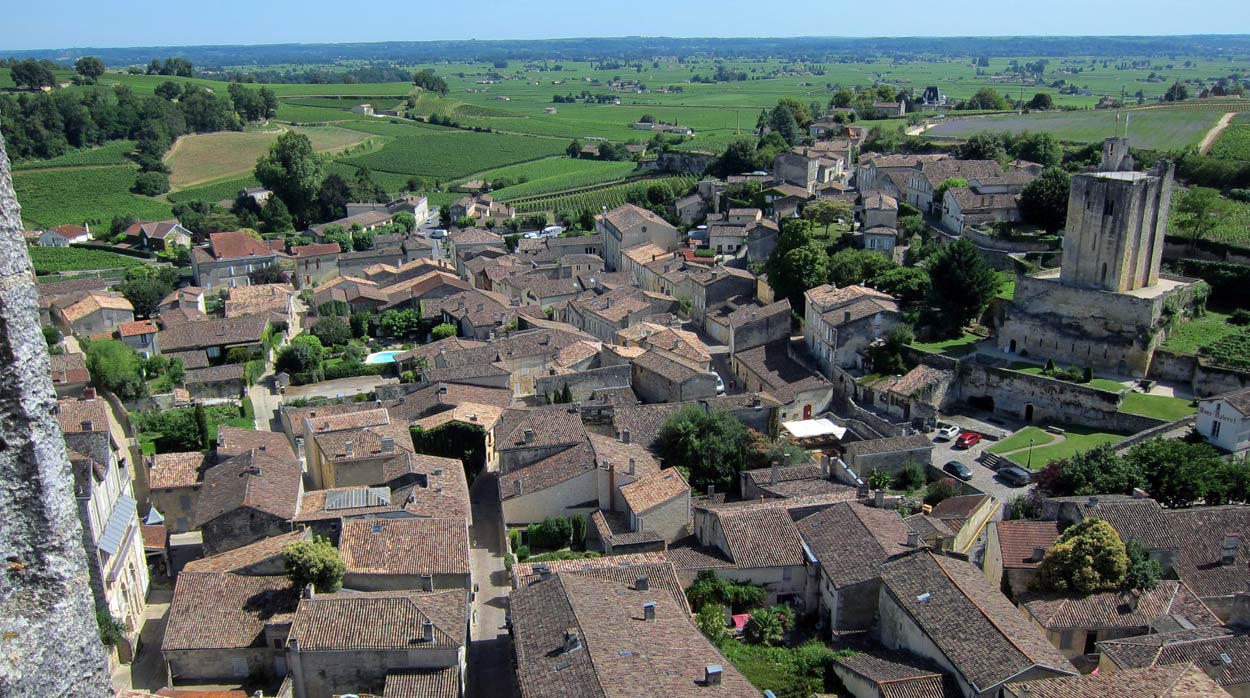
The view from the top of the church tower offers a spectacular perspective of the town of Saint Emilion.
Bountiful Aquitaine! What landscapes, culture, and heritage. Its generosity is evident in the diversity of its countryside: the sloping Bordeaux vineyards, the sandy beaches of its Atlantic coast (Les Landes), the diversiry of the Basque country, and the plateau of the Périgord Noir. Countless roads (to bike) crisscross villages with a wealth of architectural styles, and where gastronomy, flavored with truffles, takes on a whole new meaning. And of course the prehistoric Lascaux caves conjure up a time when art found its form in rock paintings 10,000 years ago.
But there is more to Aquitaine than its landscapes and awesome natural beauty. It also has a rich civilization whose roots go back to the Celts. Ancient druidic symbols in aging churches bear silent witness to their Celtic ancestry. Some of these Roman churches are on the old pilgrim routes to Santiago de Compostela in Spain, one of the most important places of Christian pilgrimages from the Middle Ages. And the time of the Roman occupation has left vestiges of extensive villas beautifully decorated with mosaics, sophisticated methods of heating and a refined style of living, all of which can be witnessed when visiting the town of Montcaret (10 km from Pitray).
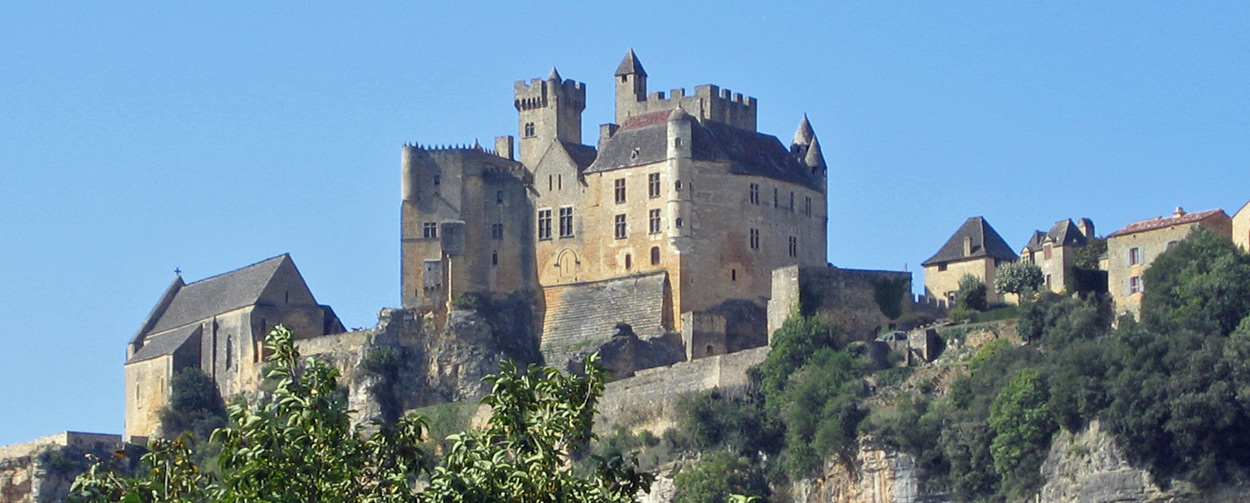
A view of the medieval Chateau de Beynac, perched 800 feet above the Dordogne river.
The many medieval castles and villages of the southwest recall the stirring times when the Aquitaine region was caught up in the struggle between France and England. Alienor d'Aquitaine, born in 1122, is an outstanding and fascinating figure of the Middle Ages. Married first to the King of France Louis VII, she brought as her dowry ... the whole of South West France. By her second marriage to Henri Plantagenet, future Henry II, King of England, she held court at Poitiers. However, this marriage led to the Hundred Years War (between France and England) and to endless skirmishes across the border of the Dordogne River. The Bataille de Castillon in 1454, on the Dordogne river bank outside of the town of Castillon, marks the end of the Hundred Year war.
Later the Wars of Religion in the 16th century would tear France apart. Here, at this time and in the southwest of France, a great figure stands out, the world-known writer and French philosopher Michel de Montaigne, friend of the Henry IV King of France. Montaigne was a far-sighted humanist in the face of cruelty and intolerance, at a time when this region was also cursed by the plague. The tower where he wrote his famous essays in these difficult times is in the village of Saint Michel de Montaigne, several miles away from Dordogne River and the Bataille de Castillon. The French Revolution also knew some of its darkest hours here in Bordeaux. It had its guillotine, its tyrants, its stories of heroism and self-sacrifice, miraculous escapes, some to America, as illustrated by the Memoirs of Madame de La Tour du Pin, A Great Adventure to the New World, ... wow life there in those times! The Aquitaine region of France is definitely steeped in history.

La tour de Montaigne (the tower of Montaigne) at the Chateau de Montaigne. This is the historical site that Montainge lived and wrote his world renown essays.
The town of Saint Emilion is a "must see" for travelers to Bordeaux. It is a living history lesson that retains much of the atmosphere and charm of past centuries. Saint-Emilion was named for the Benedictine monk, Emilion, who arrived in the 8th century to live a reclusive life as a hermit. After 17 years, he had become the leader of a group of other Benedictines who had also come to the area. He had such a strong impact on the town that it eventually took his name. The town of Saint-Emilion was a center of religious life in those days. The monks carved an entire church from a single huge piece of limestone over the course of 300 years beginning in the 9th century. It remains today as the greatest monolith church in Europe.
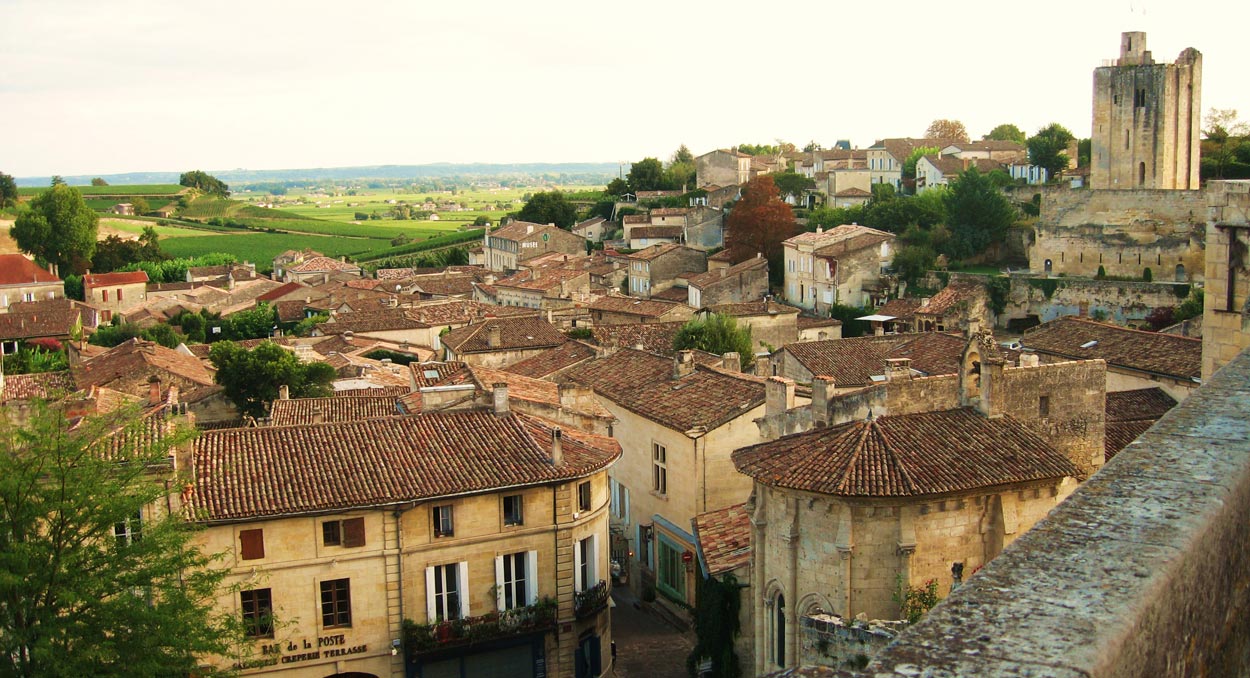
The town of Saint Emilion.
As time passed the town prospered and grew. To protect the residents and commerce, the town became fortified and surrounded with strong walls which are still there today. During the 12th century, the town became even more fortified with the addition of a moat, gates, the City Keep, the King's Tower and inner ramparts built to strengthen the fortifications.
From the 13th century to the 16th century, the region was marked by wars between the French and English. The region (and the town of Saint Emilion) changed ownership on several occasions. The town was looted more than once by each side. By the end of the 16th century, Saint Emilion was no longer the prosperous center that it had once been. Many of the buildings and monuments were damaged and the population was diminished. n the mid 1800s, the growth of the wine trade and commerce related to it brought a new prosperity to the region. As the reputation for the wines of Saint Emilion grew, so did travel to the region by traders and tourists. The residents of the area started restoring the town to accommodate the wine trade and to take advantage of the traffic it created. Today Saint Emilion is a classified World Heritage site.

Down by the Dordogne River the roads runs flat, but the river is hemmed in on both sides by plateaus and rolling hills, and that provides for a lot of short climbs and a very broad variety of terrain.
The Dordogne River rises just to the west of Le Mont-Dore in the Auvergne Mountains of central France. It flows southwest and then west for about 300 miles before, near Bordeaux, joining forces with the Garonne River to form the Gironde estuary. From its source in the hills it passes through rich and rolling countryside picking up the nutrients that help feed the roots of the Bordeaux region's famous grape plants. Conversations about the Dordogne River valley will immediately make some people think of wine. After all, the Dordogne feeds many vineyards of Bordeaux, one of the largest wine region in the world and an area that produces almost one-third of the fine wines of France. Just east of the city of Bordeaux, the Dordogne does travel by the vine-covered slopes of St-Emilion, Pomerol, and the Cotes de Castillon vineyards.
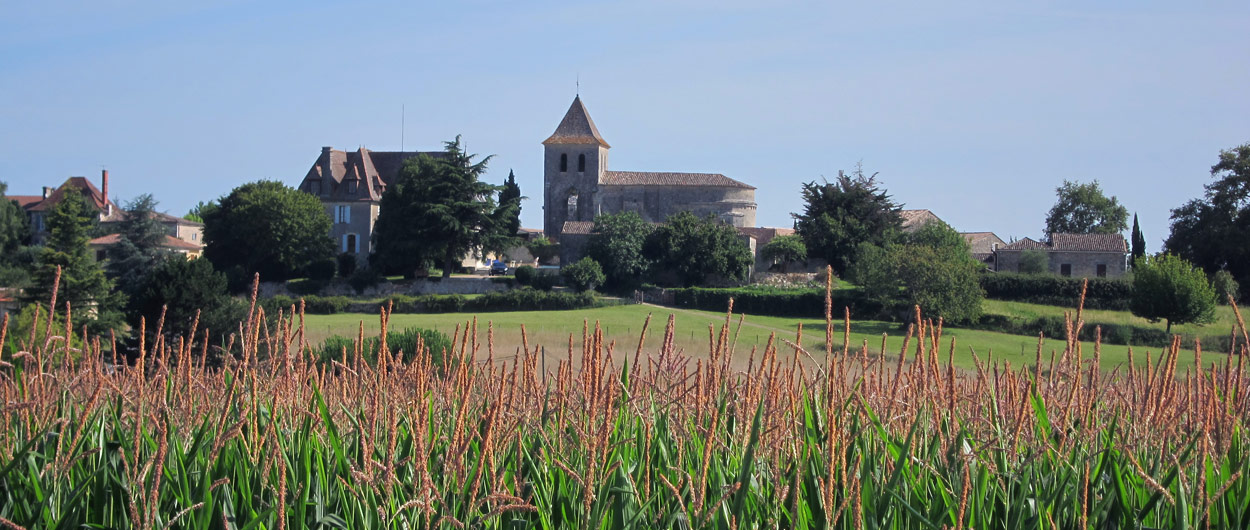
A typical site of one of the many small villages that dot the countryside and sit atop the hill sides.
Further east a cyclist's fancy will find rolling hills of wheat-filled fields and cool distractions. Make a short detour to Les Eyzies-de-Tayac, where the Font de Gaume, a cave, is home to the region's most important cave drawings. Medieval Sarlat, just a pedal turn beyond, is the center of a fine concentration of hilltop castles. Now the land is also beginning to change, becoming lusher, more accentuated. The river swings within detour's range of one of southern France's most-visited wonders, the cliff-edge medieval village of Rocamadour. From there to the river's spring in the Auvergne Mountains, it is grand stretches of quiet country roads and slow French villages.
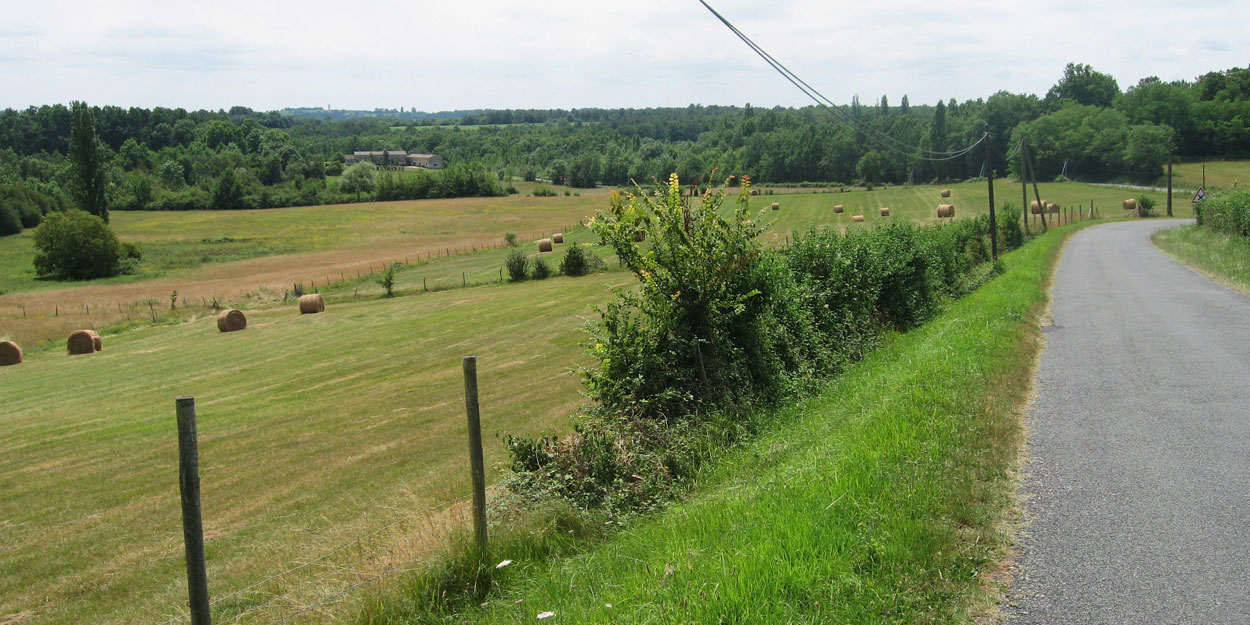
Sometimes you're meandering through a countryside of vineyards, and other times along fields and woods.
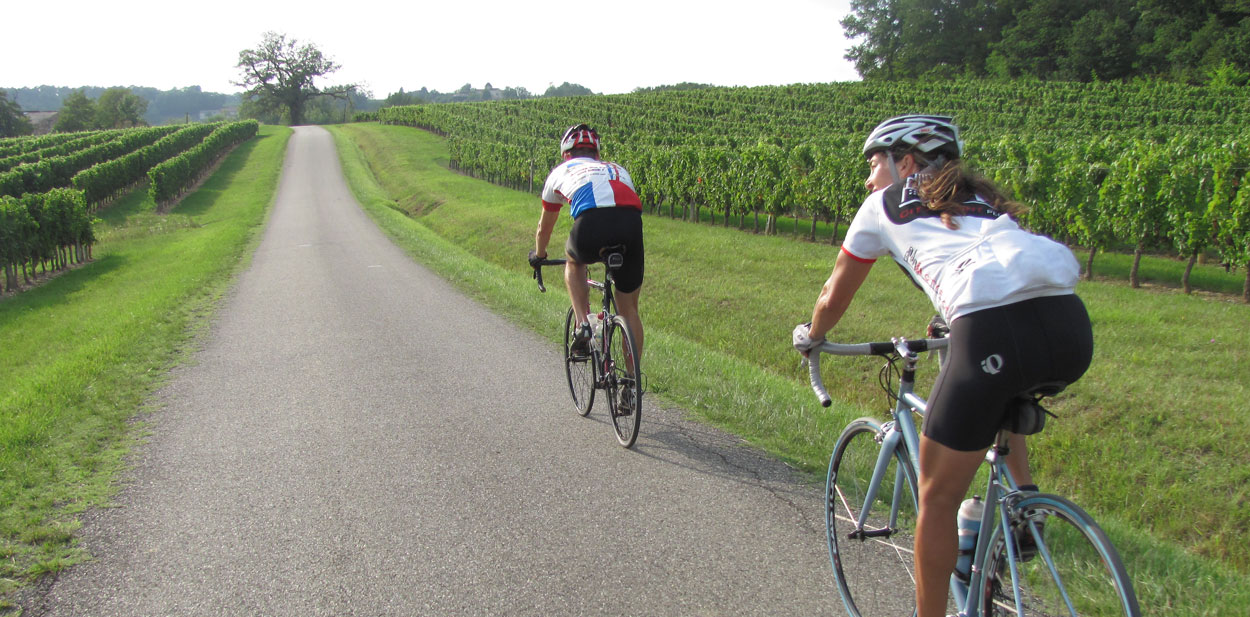
It's a wonder and a pleasure that the roads are so well paved. We'll take it!
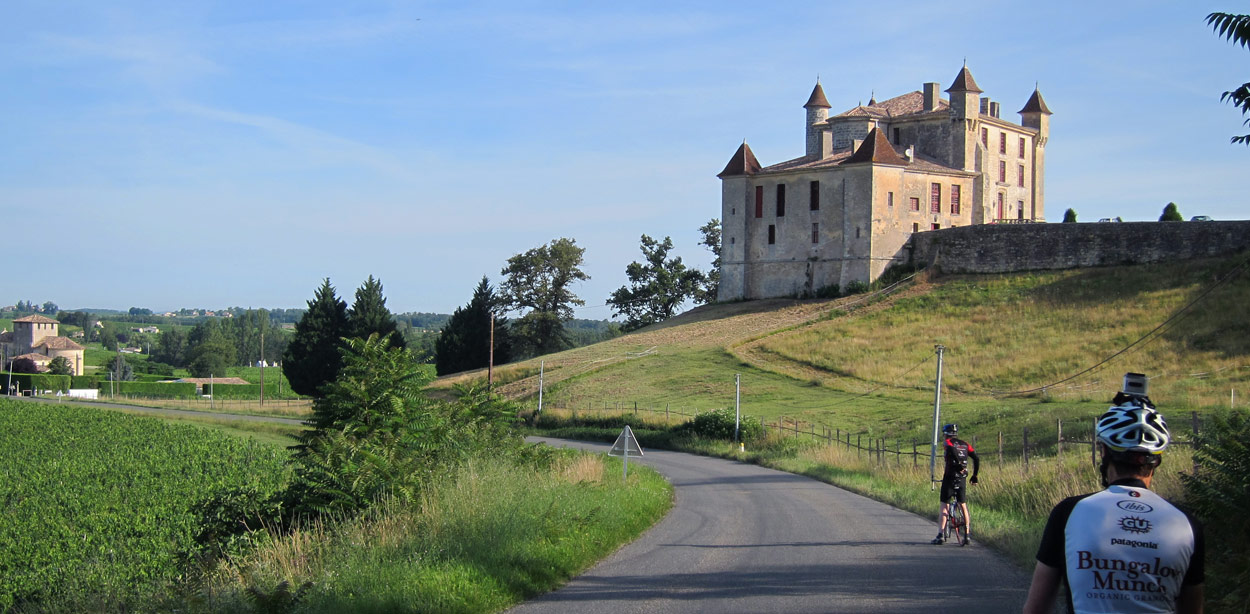
Chateau de Monbadon, dating back to the 14th century, another example of the depth of history in the region.
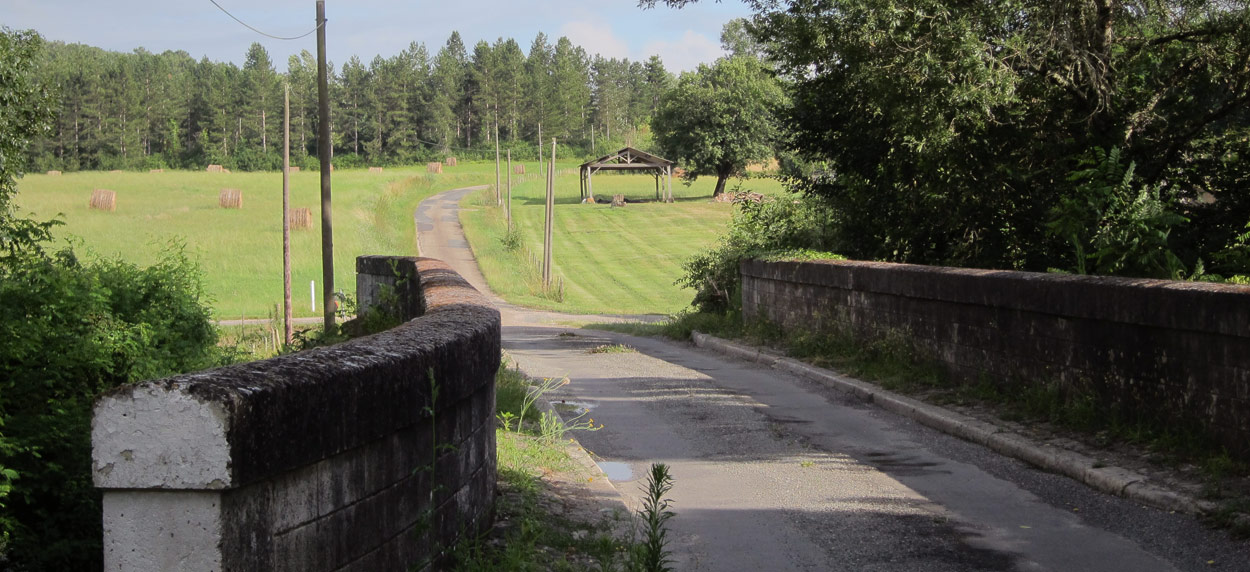
Riding through this countryside brings you back in time.
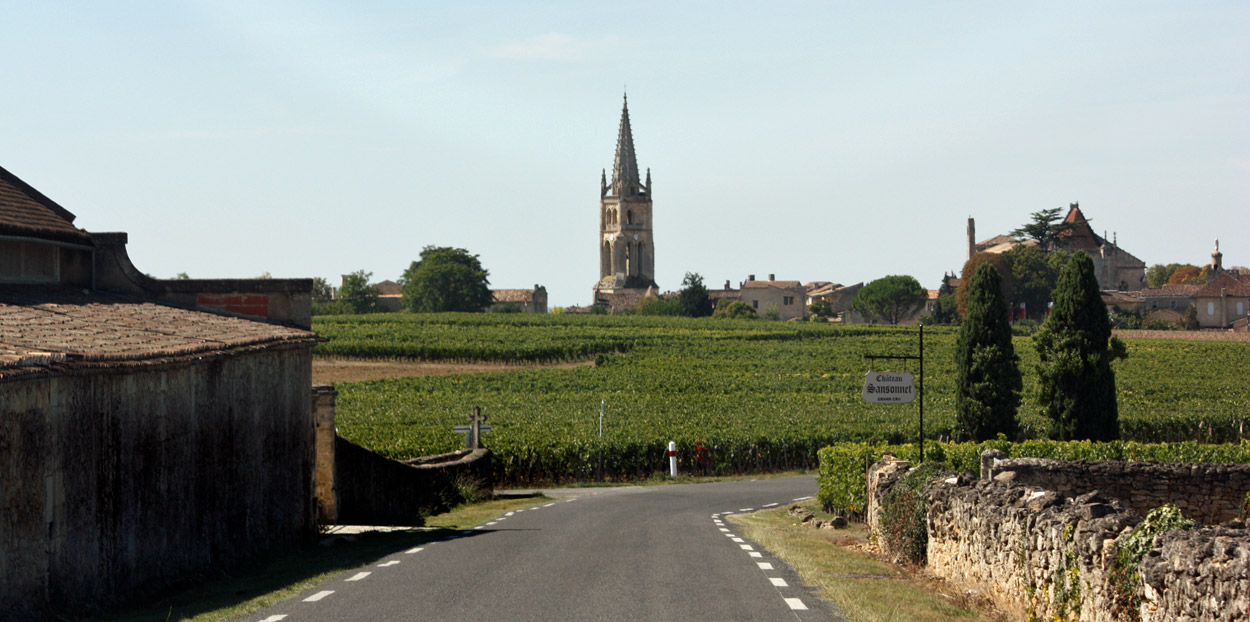
The village of Saint Emilion, approaching from the east, with the church tower as its beacon.

And here the approach to Saint Emilion from the west.